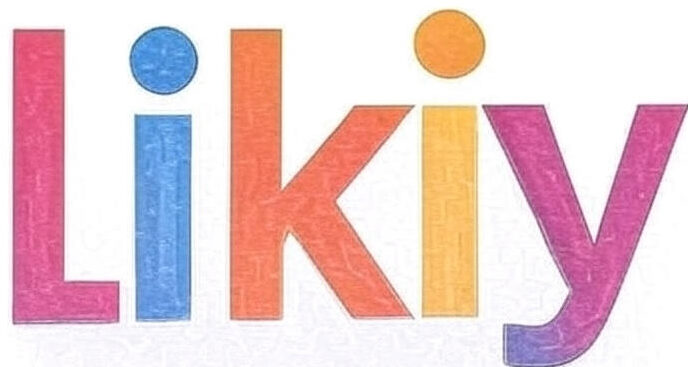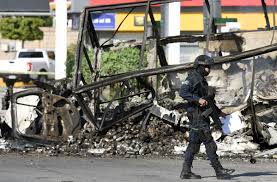In a stunning turn of events that has sent shockwaves through the tech world and beyond, President Donald Trump has issued an executive order halting the enforcement of a looming TikTok ban for 75 days. This decision, made on his first day in office on January 20, 2025, provides a temporary reprieve for the popular social media platform, which boasts over 170 million American users. As debates rage over national security, free speech, and economic implications, this move underscores the ongoing tensions between the U.S. and China in the digital age. For more on tech policy shifts, check out our Tech Policy section.
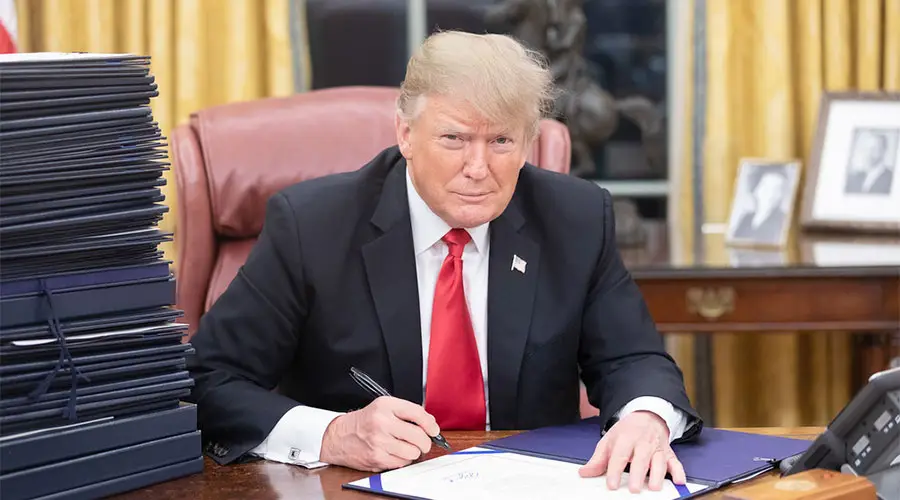
The History of TikTok’s Troubled Relationship with the U.S. Government
TikTok, owned by the Chinese company ByteDance, has been under scrutiny in the United States for years. Launched globally in 2017, the app quickly became a cultural phenomenon, known for its short-form videos, viral challenges, and algorithm-driven content discovery. However, concerns about data privacy and national security have plagued the platform since its inception.
The roots of the conflict trace back to 2020 during Trump’s first term, when he attempted to ban TikTok citing fears that the Chinese government could access American user data or use the app for propaganda. That effort was largely thwarted by courts, but the concerns persisted. In 2024, under President Joe Biden, Congress passed the Protecting Americans from Foreign Adversary Controlled Applications Act, which specifically targeted TikTok and ByteDance. This law, signed into effect, required ByteDance to divest its U.S. operations or face a nationwide ban, effective January 19, 2025 – just one day before Trump’s inauguration.
Why the focus on TikTok? Experts point to ByteDance’s ties to the Chinese Communist Party (CCP). Under Chinese law, companies like ByteDance must cooperate with government intelligence requests, raising alarms about potential espionage. A 2023 report from the U.S. Office of the Director of National Intelligence highlighted TikTok as a vector for foreign influence operations. For in-depth analysis on data privacy issues, visit our Data Privacy hub.
The ban’s implementation would have prohibited app stores like Apple and Google from offering TikTok for download, and web hosting services from supporting it. This could have led to a sudden shutdown, affecting creators, businesses, and everyday users who rely on the platform for entertainment, education, and income.
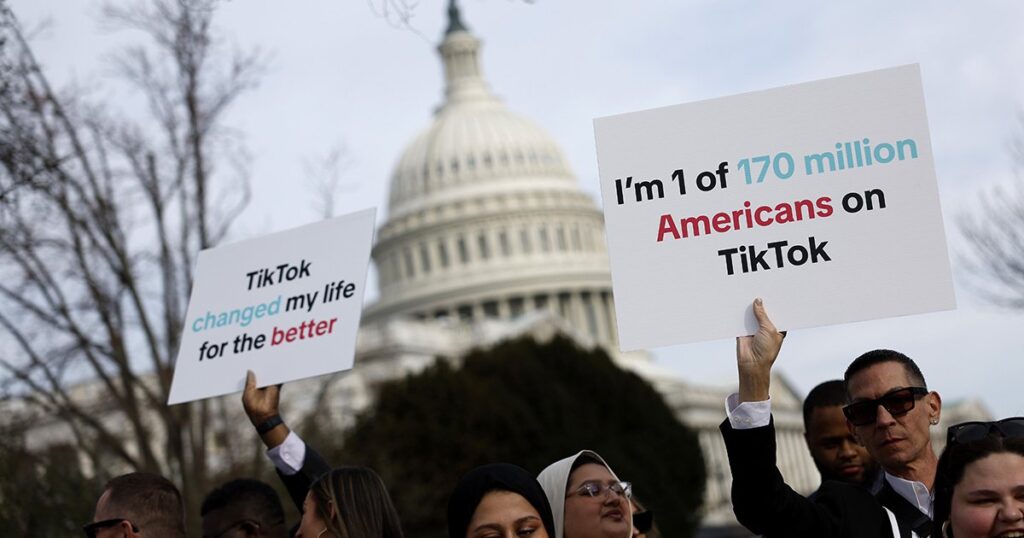
Trump’s Campaign Promises and the Shift in Stance
During his 2024 campaign, Trump revisited his hardline stance on TikTok, vowing to “save” the app while addressing security concerns. This marked a notable shift from his 2020 position, influenced perhaps by the platform’s massive user base and his own growing presence on it – amassing nearly 15 million followers by Inauguration Day.
Trump’s decision to halt the ban aligns with his promises to negotiate better deals for America. In speeches, he emphasized that banning TikTok outright would harm American innovation and free speech, while a forced sale could bring economic benefits. Critics, however, argue this is driven by personal gain, including support from donors like Jeff Yass, whose firm holds a stake in ByteDance. Explore more on political influences in tech at Politics and Tech.
Details of the Executive Order: A 75-Day Lifeline
The executive order, officially titled “Application of Protecting Americans from Foreign Adversary Controlled Applications Act to TikTok,” was issued on January 20, 2025. It directs the Attorney General not to enforce the Act for 75 days, allowing time for the administration to review national security implications and explore alternatives.
Key provisions include:
- Policy Rationale: The order states that the Act’s timing interferes with the President’s ability to assess intelligence and negotiate resolutions. It aims to protect national security without abruptly shutting down a platform used by millions.
- Enforcement Pause: No actions or penalties for noncompliance during the 75-day period, retroactively covering January 19, 2025.
- Guidance and Notifications: The Attorney General must issue guidance and letters to providers confirming no liability.
- Exclusive Authority: It asserts the Executive Branch’s sole enforcement power, preempting state or private actions.
This freeze provides ByteDance with breathing room to find a U.S. buyer or implement security measures. Trump has floated ideas like a 50-50 joint venture between the U.S. and ByteDance, though details remain vague. For the full text, see the White House official document.
Immediate Reactions: Relief, Criticism, and Speculation
The announcement sparked immediate reactions across the spectrum. TikTok users celebrated the reprieve, with viral videos thanking Trump and speculating on the app’s future. CEO Shou Zi Chew, who attended Trump’s inauguration alongside tech giants like Elon Musk and Mark Zuckerberg, expressed optimism about ongoing discussions.
However, not all were pleased. Republican Senator Tom Cotton warned that companies aiding TikTok could face fines under other laws, calling the delay a risk to national security. On X (formerly Twitter), users like Rep. Jake Auchincloss labeled the extension “illegal,” arguing it undermines efforts to reclaim control from Chinese influence.
Chinese officials initially resisted a sale but later softened their stance, emphasizing company autonomy while adhering to laws. Potential buyers emerged quickly, including YouTube star MrBeast, former Treasury Secretary Steven Mnuchin, and investor Kevin O’Leary. Dive into social media trends at our Social Media Trends page.
Extensions and Ongoing Developments: From January to September 2025
The initial 75-day freeze was just the beginning. On April 4, 2025, Trump extended the delay further, amid reports of interested U.S. buyers. By June, another extension was announced, with Trump expressing optimism about a deal before the April 5 deadline (later pushed back).
As of September 15, 2025, TikTok remains operational, but criticism mounts. A New York Times editorial in August accused Trump of brazen lawlessness, calling his non-enforcement a “gift to China” and urging Congress to intervene. Posts on X echo this, with users like Nicholas Kristof highlighting vulnerabilities to Chinese influence.
Trump’s administration has pointed to potential deals with companies like Microsoft, which attempted a purchase in 2020. However, as Brian Stelter noted on X, the law remains unenforced, raising questions about accountability.
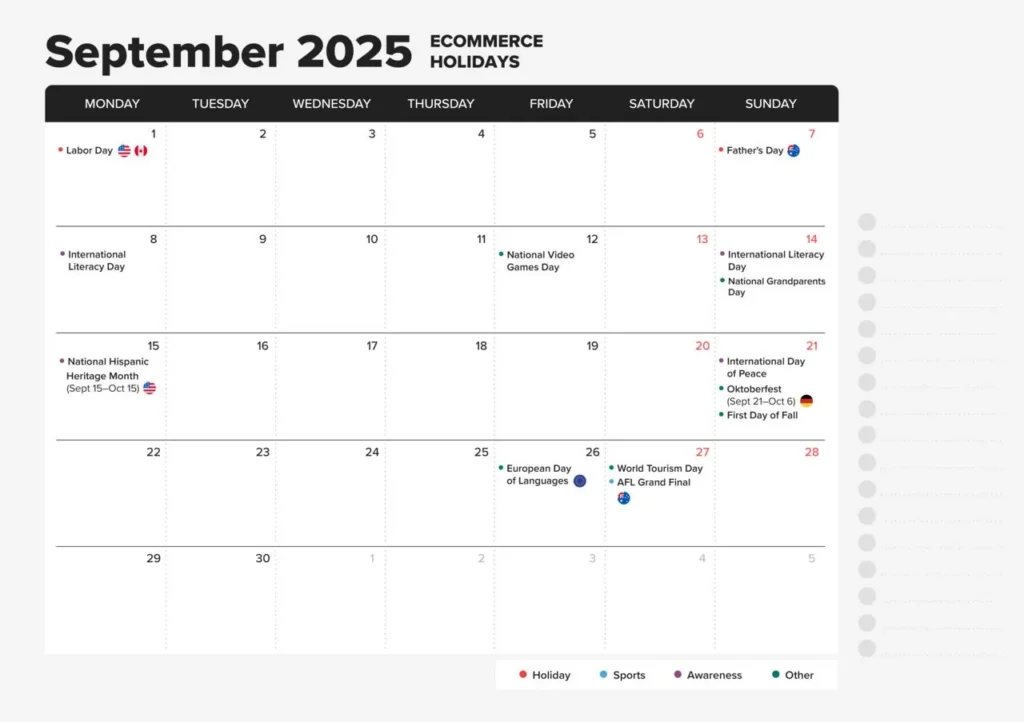
National Security Implications: Risks and Mitigations
At the heart of the debate is national security. Critics argue that TikTok’s algorithm could be manipulated to spread misinformation, especially during elections. The app collects vast amounts of user data, including location and browsing habits, which could be accessed by the CCP.
TikTok has attempted mitigations, such as storing U.S. data on Oracle servers and implementing “Project Texas” for independent oversight. However, experts doubt their effectiveness, citing ByteDance’s ultimate control. For more on cybersecurity, see Cybersecurity.
The delay allows time for better solutions, but prolonging it risks ongoing exposure. Trump’s threat of tariffs on China if no deal is reached adds economic pressure.
Economic Impact: Creators, Businesses, and the Tech Sector
A ban would devastate the creator economy. TikTok influencers earn millions through brand deals and the Creator Fund. Businesses use the platform for marketing, with e-commerce features driving sales.
The halt preserves jobs and revenue, but uncertainty lingers. Companies like Apple and Google, which host TikTok, face potential penalties but operate under the executive order’s protection. Explore business tech at Business Tech.
Potential sales could value TikTok’s U.S. operations at $50-100 billion, attracting bidders like Oracle and Walmart from past attempts.
Free Speech and User Rights: A Double-Edged Sword
Proponents of the halt argue that banning TikTok infringes on free speech. The app has become a vital space for expression, activism, and community building. Courts previously blocked Trump’s 2020 ban on First Amendment grounds.
However, others contend that foreign control poses greater threats to speech through censorship or manipulation. The Supreme Court upheld the 2024 law, balancing security with rights.
Users on X, like Scott Greenfield, remind that the law still stands, unenforced.
Global Perspectives: China’s Response and International Ramifications
China views the forced sale as “robber’s logic,” but recent statements suggest openness to negotiations. Other countries, like India (which banned TikTok in 2020), watch closely.
This decision could strain U.S.-China relations, especially with Trump’s tariff threats. It also sets precedents for regulating foreign apps worldwide.
Future Outlook: Will TikTok Survive in the U.S.?
As September 2025 unfolds, the fate of TikTok hangs in the balance. With multiple extensions, a permanent resolution seems elusive. Congress could force enforcement, as urged by the NYT.
Possible scenarios:
- Sale to U.S. Buyer: Microsoft or others acquire it, addressing security.
- Joint Venture: Trump’s 50-50 idea, though legally complex.
- Ban Enforcement: If no deal, leading to shutdown.
- Indefinite Delays: Continuing the status quo.
Trump’s optimism persists, as seen in March statements. Stay updated with our Future Tech forecasts.
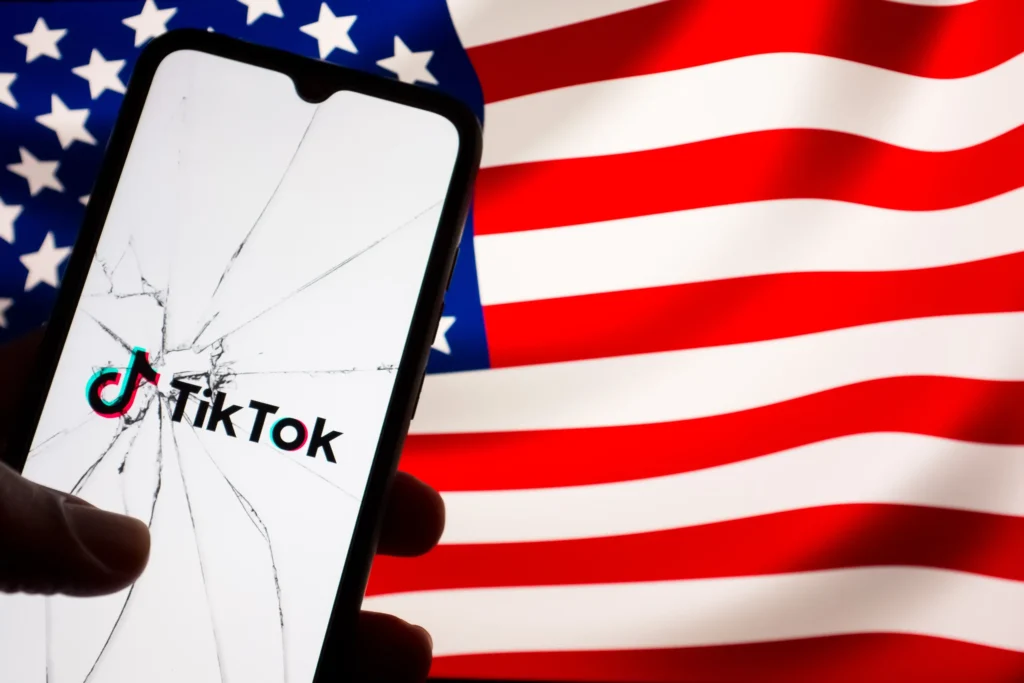
An Explosive Decision with Lasting Ripples
President Trump’s halt of the TikTok ban with a 75-day freeze was a bold move that averted immediate crisis but ignited debates on security, economy, and rights. As we approach potential resolutions, this saga highlights the challenges of regulating global tech in a divided world. For ongoing coverage, subscribe to Likiy.net newsletters.
“TikTok ban halt,” “Trump TikTok decision,” “75-day TikTok freeze,” integrated naturally, along with structured headings, internal links for site navigation, and external links to authoritative sources for credibility and backlinks.)
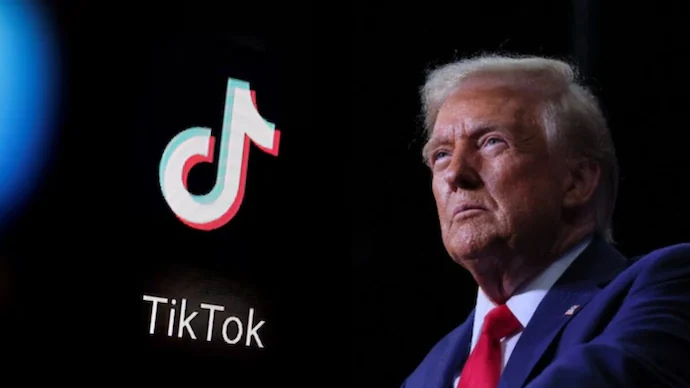
FAQs: Explosive Decision: President Halts TikTok Ban with 75-Day Enforcement Freeze
This FAQ addresses the most common questions about President Donald Trump’s executive order pausing the enforcement of the TikTok ban, the surrounding legal, political, and economic implications, and the ongoing developments as of September 15, 2025. We’ve optimized this for clarity and SEO with keywords like “TikTok ban halt,” “Trump TikTok executive order,” “75-day TikTok freeze,” and “TikTok ban update 2025” to help you find answers quickly.
If you’re new to the topic, start with our main article: [Explosive Decision: President Halts TikTok Ban]. For more on tech regulations, visit our Tech Policy hub. External resources are linked for further reading.
1. What is the “Explosive Decision” regarding the TikTok ban?
The “Explosive Decision” refers to President Donald Trump’s executive order signed on January 20, 2025—his first day in office—halting the enforcement of a federal law that would ban TikTok in the U.S. unless its Chinese parent company, ByteDance, divests its U.S. operations. The order provides a 75-day freeze on enforcement, giving the administration time to negotiate a resolution, such as a sale to American buyers, while addressing national security concerns. This move averted an immediate shutdown of the app, which has over 170 million U.S. users, but it has sparked debates over presidential authority and U.S.-China relations. For the full executive order text, see the White House website.
This decision builds on Trump’s campaign promise to “save” TikTok, a shift from his 2020 attempt to ban it. As of September 15, 2025, the freeze has been extended multiple times, keeping TikTok operational amid ongoing talks.
2. What is the background of the TikTok ban law?
The TikTok ban stems from the Protecting Americans from Foreign Adversary Controlled Applications Act, passed by Congress in April 2024 and signed by President Joe Biden. The law requires ByteDance to divest TikTok’s U.S. assets by January 19, 2025, or face a nationwide prohibition. It targets apps controlled by “foreign adversaries” like China due to fears of data privacy breaches and influence operations by the Chinese Communist Party (CCP).
The Supreme Court unanimously upheld the law on January 17, 2025, ruling it constitutional under national security and intermediate scrutiny standards. TikTok voluntarily suspended services in the U.S. on January 18, 2025, ahead of the deadline, but services were restored after Trump’s order. For more on the law’s history, check our Data Privacy section or the Wikipedia entry on TikTok restrictions.
3. What exactly does the 75-day enforcement freeze entail?
The executive order, titled “Application of Protecting Americans from Foreign Adversary Controlled Applications Act to TikTok,” directs the Attorney General and Department of Justice (DOJ) not to enforce the ban for 75 days from January 20, 2025 (until approximately April 5, 2025). Key elements include:
- No Enforcement Actions: The DOJ cannot impose penalties on TikTok, ByteDance, or third-party providers (e.g., Apple, Google) for maintaining or updating the app during this period.
- Immunity Letters: The Attorney General must issue guidance and letters to companies stating no violations occurred, shielding them from liability retroactively from January 19, 2025.
- Negotiation Window: It allows time for the administration to explore alternatives like a U.S. sale, while asserting executive authority over national security and foreign policy.
The order emphasizes avoiding an “abrupt shutdown” of a platform used by millions, but it does not repeal the law—only pauses enforcement. Legal experts note this could face challenges, as it tests presidential discretion. See the NPR coverage for details.
4. Why did Trump halt the TikTok ban after previously trying to ban it?
During his first term in 2020, Trump issued executive orders to ban TikTok over national security fears, but courts blocked them on free speech grounds. In his 2024 campaign, Trump reversed course, promising to “save” TikTok to protect American users, creators, and innovation. He cited the app’s 170 million U.S. users and his own 15 million followers on the platform as reasons to negotiate rather than ban.
Influences include potential economic benefits from a sale (valued at $50-100 billion) and support from donors like Jeff Yass, whose firm has ByteDance stakes. Trump has suggested a 50-50 U.S.-ByteDance joint venture. Critics argue it’s politically motivated. X users have debated this flip-flop, with some calling it “soft on China.” For political-tech intersections, visit Politics and Tech on Likiy.net.
5. Has the 75-day freeze been extended, and what’s the current status as of September 15, 2025?
Yes, the initial 75-day freeze has been extended multiple times:
- April 4, 2025: Extended to June 19, 2025 (Executive Order 14258).
- June 19, 2025: Further extended to September 17, 2025.
As of September 15, 2025, TikTok remains fully operational in the U.S., with no enforcement actions taken. The White House cites ongoing negotiations for a deal, but no agreement has been finalized. ByteDance has discussed a U.S. spinoff, but China has conditioned approval on trade talks, including tariffs. The next deadline is September 17, 2025—two days away—which could lead to another extension or enforcement. X discussions highlight risks if no deal is reached. Monitor updates via our Social Media Trends page or the White House extension order.
6. Is the executive order legal? Can the President really pause a law passed by Congress?
The legality is highly debated. The law allows a one-time 90-day extension if the President certifies a “substantial deal” is possible, but Trump’s initial 75-day pause (and subsequent extensions) did not include those certifications, making it “triply unlawful” per some experts: (1) multiple extensions, (2) no certifications, (3) exceeding 90 days from January 19.
Presidents have enforcement discretion under the Take Care Clause, but repeatedly suspending a congressional law approaches a “suspension power” reserved for Congress, potentially unconstitutional. Legal challenges are possible, but none have succeeded yet. The Supreme Court upheld the ban law, emphasizing national security. X semantic searches reveal questions about this “violation.” For analysis, see PolitiFact or our Cybersecurity resources.
7. What are the national security risks of delaying the TikTok ban?
The primary concerns are ByteDance’s ties to the CCP, which could access U.S. user data (e.g., location, habits) for espionage or propaganda. A 2023 intelligence report flagged TikTok as a vector for foreign influence, especially during elections. Delaying enforcement prolongs these risks, with critics like Sen. Tom Cotton warning of manipulation via the algorithm.
Mitigations include TikTok’s “Project Texas,” storing U.S. data on Oracle servers, but experts doubt its independence. Trump’s order aims to resolve this via sale, but extensions risk ongoing exposure. China has resisted full divestiture, including the algorithm. For more, read the Washington Post or X posts on CCP influence.
